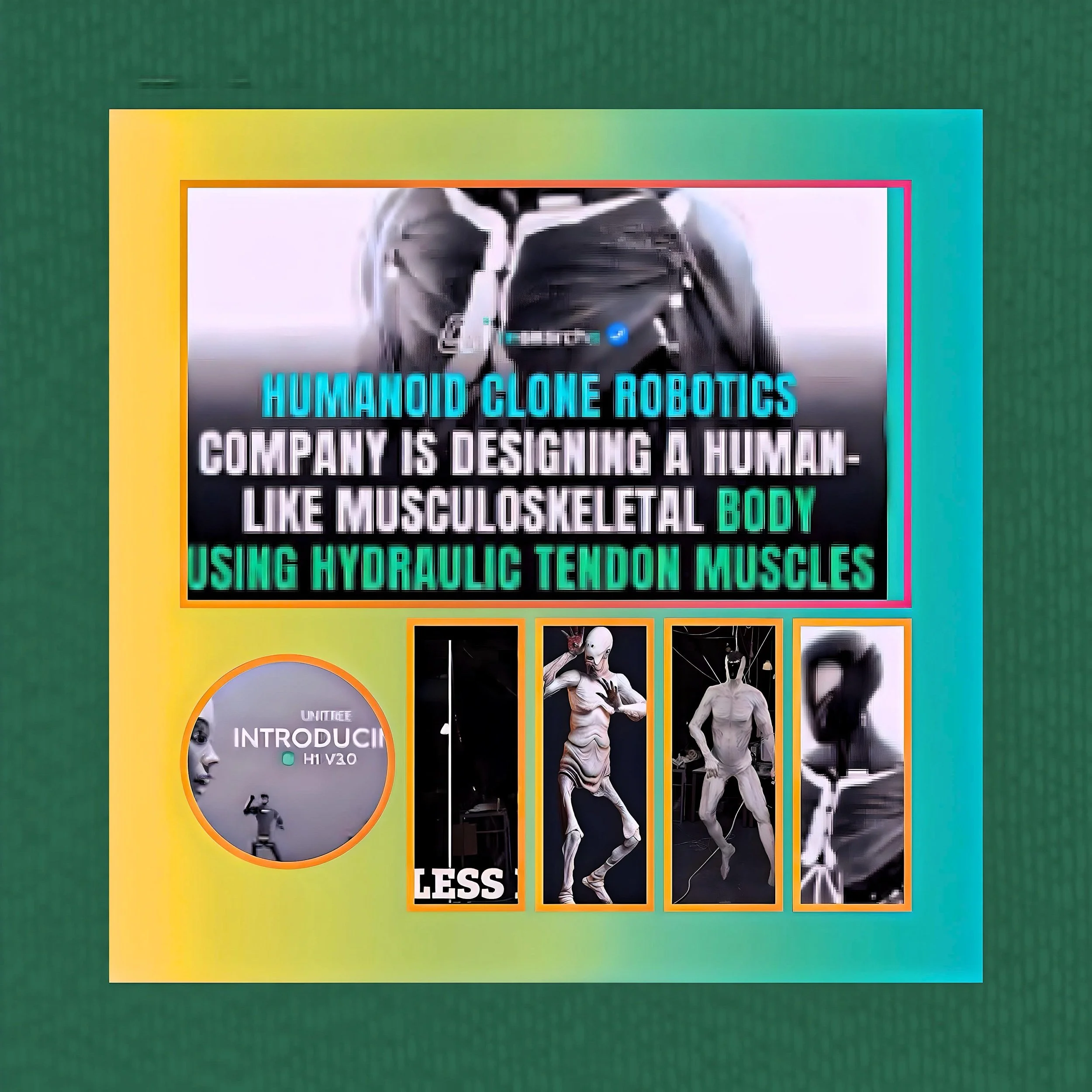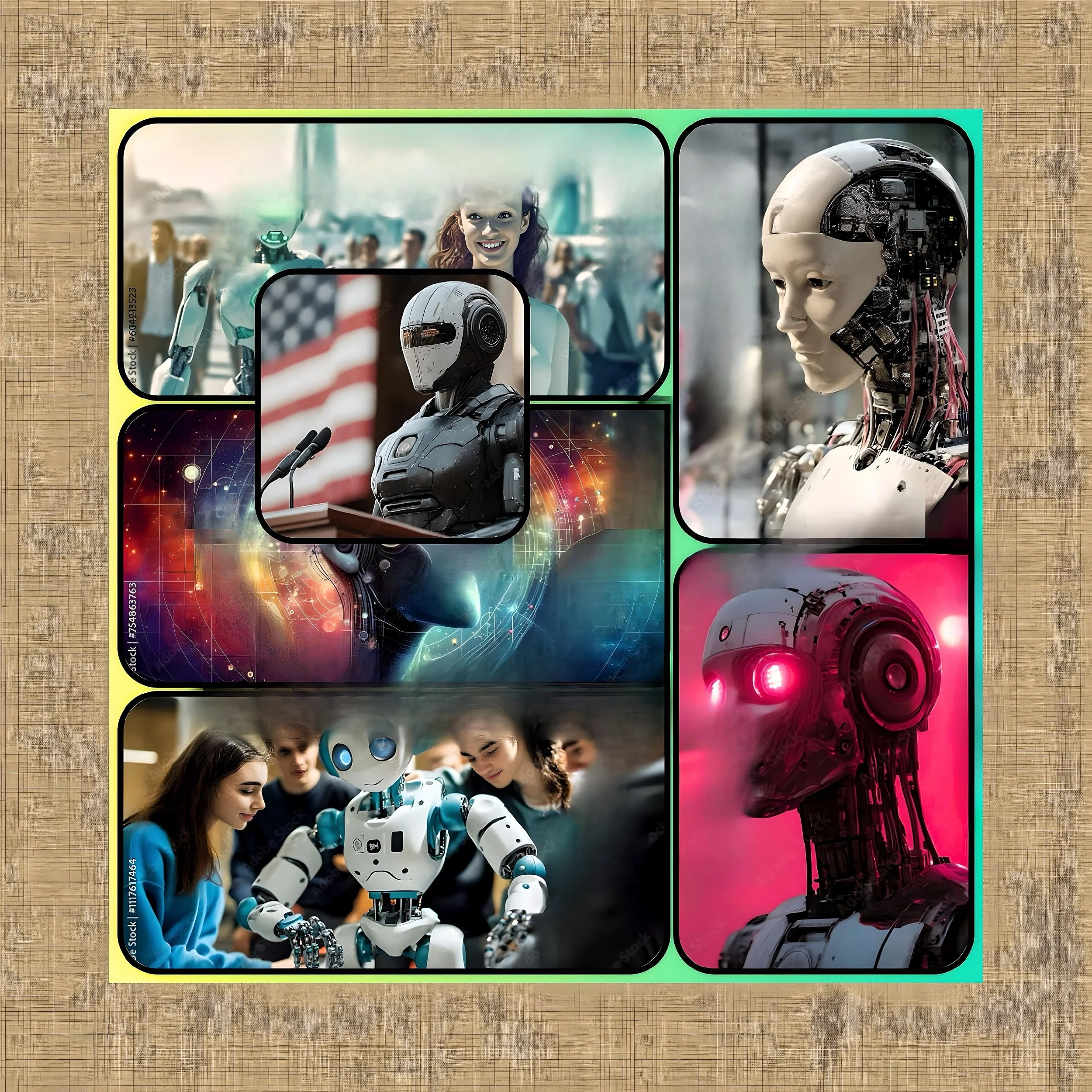World's First Bipedal Musculoskeletal Android Unveiled
Introduction
The unveiling of Protoclone V1 by Clone Robotics marks a pivotal moment in robotics, introducing the world’s first bipedal musculoskeletal android designed to replicate human anatomy with unprecedented fidelity.
This synthetic human prototype, featuring over 200 degrees of freedom, 1,000 myofibers, and 500 sensors, represents a paradigm shift in bio-inspired robotics.
While its lifelike movements and anatomically accurate structure have captivated audiences, the android’s faceless design and suspended demonstrations have also sparked unease, reflecting the complex interplay between technological marvel and societal apprehension.
As Clone Robotics prepares to commercialize its Alpha series in 2025, Protoclone V1 emerges as both a testament to engineering ingenuity and a catalyst for debates on the future of human-robot interaction.
Anatomical Fidelity and Biomechanical Innovation
Replicating Human Musculoskeletal Systems
Protoclone V1’s design philosophy centers on biomimicry, replicating the human body’s skeletal, muscular, and vascular systems through synthetic analogs.
Its 3D-printed polymer bones mirror human skeletal geometry, while fused joints reinforce stress points to enable fluid, non-jerky movements.
The android’s 1,000 myofibers—pressurized mesh tubes that contract like biological muscles—provide dynamic force generation, anchored to the skeleton via synthetic tendons.
This approach diverges from traditional motor-driven robotics, prioritizing the efficiency and adaptability of organic movement over mechanical precision.
A 500-watt hydraulic pump circulates fluid through microchannels, mimicking the human cardiovascular system and enabling active cooling akin to sweating.
This innovation prevents actuator overheating during high-intensity tasks, though the reliance on pneumatics in the current prototype introduces latency in balance corrections—a limitation Clone Robotics aims to address by transitioning to hydraulic systems.
Sensor Integration and Neural Analogues
The android’s sensor network comprises 500 inertial, pressure, and environmental detectors, providing real-time feedback on joint positions, muscle tension, and external stimuli.
This synthetic “nervous system” integrates data streams to optimize movement trajectories, mirroring the human brain’s sensorimotor integration.
Four depth cameras in the skull offer stereoscopic vision, while distributed processors analyze inputs to adjust limb dynamics—an early step toward autonomous learning through observational mimicry.
Despite these advancements, Protoclone V1’s sensor suite remains rudimentary compared to biological proprioception.
For instance, human balance relies on continuous micro-adjustments informed by inner ear vestibular feedback, a feature not yet fully replicated in the android’s inertial sensors.
Public Reception: Fascination Meets Disquiet
Viral Visibility and Aesthetic Polarization
A 40-second video of Protoclone V1 twitching suspended limbs garnered millions of views within hours, underscoring public fascination with its lifelike motions.
However, the android’s faceless visage—a black reflective visor replacing human features—elicited polarized reactions.
While some praised its avoidance of the “uncanny valley,” others likened it to a “sleep paralysis demon” or dystopian sci-fi entity.
Clone Robotics defends the design as pragmatic, simplifying sensor placement and sidestepping the ethical complexities of hyper-realistic facial replication.
Social media commentary revealed deeper anxieties, with users humorously suggesting smiley-face decals or referencing Frankenstein and Terminator narratives.
These reactions highlight the cultural tension between technological optimism and existential unease—a dichotomy Clone Robotics navigates as it positions Protoclone as a domestic aid rather than a human replacement.
Industry Skepticism and Technical Scrutiny
Robotics experts acknowledge Protoclone’s biomechanical achievements but question its operational viability.
The prototype’s reliance on ceiling supports during demonstrations has fueled doubts about its bipedal autonomy, contrasting with Boston Dynamics’ Atlas, which performs unsupported parkour.
Critics argue that pneumatic actuators, while cost-effective, cannot match the rapid force modulation of biological muscles, limiting balance recovery during perturbations.
Comparative analyses note that the University of Tokyo’s Kengoro (2017) demonstrated similar musculoskeletal principles but as a research platform, not a commercial product.
Clone Robotics’ emphasis on market readiness—via the 2025 Alpha release—distinguishes Protoclone, though its $200,000+ price tag (comparable to luxury supercars) raises questions about scalability.
Redefining Human-Robot Synergy
Prosthetics and Medical Applications
Protoclone’s myofiber technology holds transformative potential for prosthetics, offering amputees actuators that replicate natural muscle compliance and energy efficiency.
By integrating pressure-sensitive synthetic skin and adaptive grip algorithms, future iterations could enable precise manipulation of fragile objects—a leap beyond rigid robotic grippers.
Clone Robotics’ collaboration with biomedical firms suggests ambitions to hybridize android components with human physiology, potentially revolutionizing neuroprosthetic interfaces.
Domestic and Industrial Integration
Clone Robotics envisions Protoclone variants performing household chores like dishwashing and laundry—tasks requiring humanoid dexterity to navigate tools designed for people.
This contrasts with single-purpose robots (e.g., Roombas), emphasizing generalizability over specialization.
In industrial settings, musculoskeletal androids could operate machinery or assist in construction, leveraging their biomechanical resilience in hazardous environments.
However, skeptics argue that humanoid forms are inefficient for most tasks, with quadrupedal robots like Spot excelling in rugged terrain without the complexity of bipedal balance.
Protoclone’s value may instead lie in social roles—elder care, education, or customer service—where human-like interaction is paramount.
Ethical and Societal Implications
Anthropomorphism and the Uncanny Valley
Protoclone’s design straddles the uncanny valley, eliciting discomfort through near-human motion paired with mechanical aesthetics.
Psychologists warn that overly anthropomorphic robots risk emotional manipulation or identity confusion, particularly among children.
Clone Robotics’ decision to omit facial features mitigates this risk but sacrifices empathetic engagement, highlighting the delicate balance between functionality and relatability.
Autonomy and Control Paradigms
The transition from teleoperation to AI-driven autonomy poses existential questions. While current prototypes rely on preprogrammed routines, future integration with AGI could enable self-directed learning—a prospect raising concerns about accountability and control.
Cybersecurity vulnerabilities in Protoclone’s sensor networks further compound risks, as malicious actors could hijack systems for physical harm.
Regulatory frameworks lag behind these advancements, with no consensus on android rights, liability for malfunctions, or ethical deployment in warfare.
Clone Robotics’ opaque development process, exemplified by undisclosed Alpha pricing and limited preorder details, exacerbates distrust among watchdogs.
The Road Ahead: Commercialization and Beyond
Alpha Series and Market Strategy
Clone Robotics plans to release 279 Alpha units in 2025, targeting high-net-worth individuals and research institutions.
Priced akin to limited-edition supercars, these androids will test real-world durability and user acceptance ahead of mass production.
The company’s viral marketing—including provocative claims like “stab it with a fork and it will bleed out”—reflects a strategy blending spectacle with technical transparency.
Hydraulic Transition and Performance Enhancements
Replacing pneumatics with hydraulics aims to address latency and force limitations, enabling unsupported walking and complex object manipulation.
Early tests suggest hydraulic myofibers could achieve 300% greater contractile force, critical for lifting heavy loads or recovering from slips.
However, hydraulic systems introduce new challenges, including fluid leakage risks and increased weight—factors Clone Robotics must mitigate to ensure consumer safety.
Swappable facial modules and customizable body coverings are also in development, allowing users to personalize android aesthetics while avoiding the uncanny valley.
These modular designs could foster emotional attachment, transforming Protoclone from a tool into a companion.
Conclusion
Toward a Synthetic Future
Protoclone V1 epitomizes the convergence of biomechanics, materials science, and AI, challenging preconceptions of robotic form and function.
Its musculoskeletal architecture not only advances prosthetic and assistive technologies but also redefines human-robot collaboration in domestic and industrial spheres.
Yet, technical hurdles—particularly in autonomy and energy efficiency—underscore the gap between synthetic mimicry and biological mastery.
As Clone Robotics navigates commercialization, ethical considerations must parallel technical progress.
Transparent dialogue on safety, privacy, and societal impact will determine whether Protoclone becomes a household ally or a cautionary tale.
In this liminal space between innovation and integration, the age of androids dawns—not with apocalyptic fanfare, but through incremental steps toward synthetic symbiosis.






